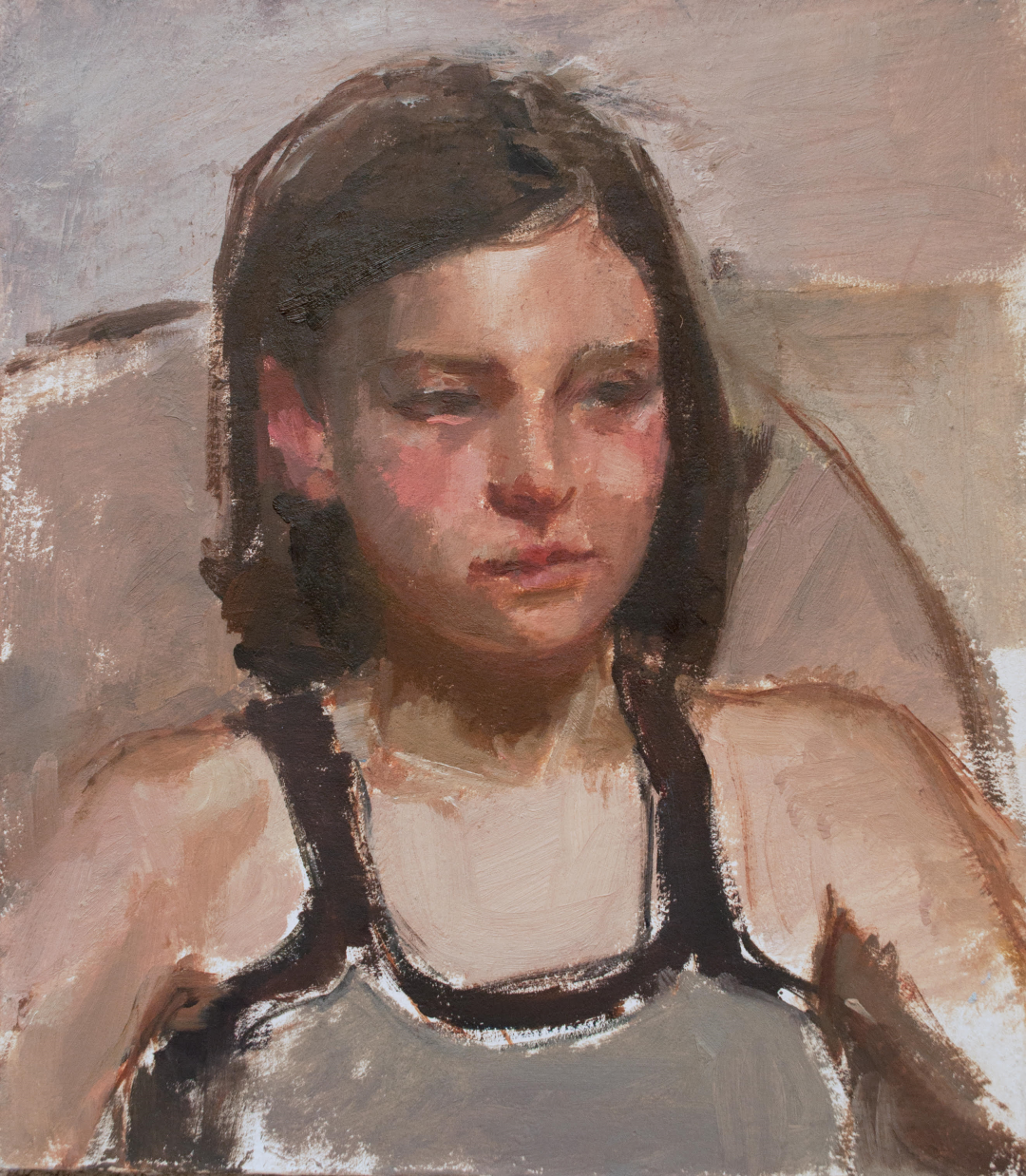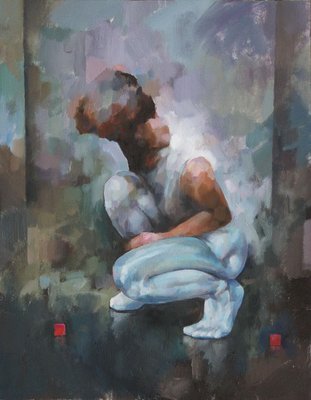Grasping Composition and Color in Figurative Oil Painting
Grasping Composition and Color in Figurative Oil Painting
Blog Article
The Function of Emotion and Expression in Figurative Oil Painting: An Extensive Analysis of Topic and Make-up
The interplay of emotion and expression in metaphorical oil paint works as a vital lens whereby one can take a look at the intricate connection in between subject issue and make-up. Artists harness numerous techniques, from shade option to brushstroke dynamics, to cultivate psychological vibration within their jobs. This nuanced orchestration not only shapes viewer understanding however also welcomes a much deeper questions right into just how these aspects coalesce to mirror the intricacies of human experience. As we explore this abundant surface, one must think about exactly how specific study light up the broader ramifications of these artistic options.
Recognizing Emotion in Art
Emotion in art works as an effective conduit for expression, enabling musicians to convey complicated sensations via their work. In figurative oil paint, this emotional deepness is usually represented via the depiction of the human number, catching the subtleties of human experience. The choice of topic, color scheme, and brushwork all add to the emotional resonance of a piece.
Artists often bring into play personal experiences, social concerns, or global themes to evoke feelings in the audience. A portrait may show susceptability, while a vibrant number in activity can signify liberty or chaos. These psychological strings attach the visitor to the art work, cultivating a discussion that goes beyond the aesthetic medium.
Additionally, the interaction in between light and shadow can enhance emotional intensity, directing the audience's gaze and accentuating particular components within the make-up. Using structure in oil paint additionally adds layers of complexity, inviting a responsive feedback that improves the emotional experience. In general, recognizing emotion in art is crucial for appreciating the nuances that define figurative oil painting, as it changes simple depiction into a profound expedition of the human condition.
Secret Elements of Make-up
In the realm of figurative oil paint, the composition works as the underlying framework that organizes visual aspects and improves the psychological story. Important components of make-up include equilibrium, comparison, focal point, and rhythm, each adding to the overall influence of the artwork.
Equilibrium refers to the circulation of visual weight within the paint, which can be attained with balanced or asymmetrical arrangements. A well-balanced make-up gives stability, permitting the audience to engage with the item sympathetically - figurative oil painting. Comparison, on the other hand, includes comparing various aspects, such as dark and light or cozy and awesome colors, to direct the viewer's eye and stimulate psychological responses
The prime focus is important, as it routes focus to the most considerable component of the paint, often highlighting the psychological core of the narrative. Through techniques like color saturation or positioning, musicians can emphasize this area properly. Rhythm pertains to the repeating of elements, developing a feeling of motion and flow throughout the structure. By masterfully integrating these vital components, musicians can craft emotionally resonant and engaging metaphorical oil paintings that astound and engage their audience.
Topic and Its Influence
Subject plays a pivotal function in figurative oil painting, as it not just works as the foundation for the story however likewise forms the customer's interpretation and emotional interaction with the artwork. The option of topic-- be it a singular figure, a team dynamic, or a thematic depiction-- directly affects the psychological environment communicated to the target market.

As an example, pictures typically evoke individual connections, disclosing the ins and outs of human expression and character, while scenes showing common tasks can produce a feeling of belonging or nostalgia. Furthermore, the social and historic context of the topic improves the audience's understanding, motivating deeper representations on social norms, worths, and the human condition.
Various subjects likewise create varying levels of involvement; a dramatic dispute shown through figures in stress might evoke feelings of anxiousness or empathy, while tranquil landscapes can conjure up peace and contemplation. Eventually, the influence of subject find out matter in figurative oil painting is profound, as it functions as an avenue for emotional resonance, directing the customer's feedback and analysis, and fostering a connection between the onlooker and the art work. This interplay is necessary for the effective interaction of the musician's intent.
Techniques for Evoking Feelings
The effectiveness of figurative oil painting in conveying emotions is considerably influenced by the methods utilized by the artist. One of the most important techniques is the use of color theory, where the tactical selection of shades can evoke particular emotional responses. Warm shades, such as oranges and reds, typically elicit feelings of interest or hostility, while cooler tones like blues and eco-friendlies have a tendency to evoke calmness or sadness.
Another essential technique is the adjustment of light and darkness, understood as chiaroscuro. This technique enhances the three-dimensionality of numbers, producing remarkable contrasts that can heighten emotional deepness. The positioning of light can direct viewers' feelings, highlighting certain aspects of the composition.
Brushwork additionally plays a crucial duty; loose, expressive strokes can convey energy and spontaneity, whereas smoother strategies may suggest serenity or precision. The plan of subjects within the composition can influence psychological effect. Close proximity can recommend intimacy, while range may show isolation.
Inevitably, the combination of these techniques allows artists to craft stories that resonate with the visitor, transforming a plain visual experience into an expressive emotional trip. - figurative oil painting

Study of Notable Works
Examining remarkable jobs of figurative oil painting discloses just how numerous methods are utilized to stimulate powerful emotions. One exemplary situation is Edvard Munch's "The Scream," where the altered figure and swirling background communicate existential fear. Munch's use shade-- vibrant oranges and deep blues-- magnifies the emotional impact, showcasing exactly how scheme selections can form viewer experience.
Another significant work is Pablo Picasso's "Les Demoiselles d'Avignon." Here, fragmented forms and bold brushstrokes reflect a turbulent psychological landscape, testing standard depictions of the female figure. Picasso's innovative composition not just records the customer's interest however also invites reflection on motifs of identity and sexuality.
Additionally, Frida Kahlo's "The Two Fridas" offers a touching exploration of duality and self-identity. The different numbers, linked by a common heart, exhibit Kahlo's emotional depth and individual narrative. figurative oil painting. Her meticulous focus to information and symbolic elements offer to involve audiences on a visceral degree
These situation studies emphasize the profound link in between emotion and make-up in metaphorical oil painting, disclosing see this here exactly how musicians harness method to communicate intricate sensations and narratives that resonate throughout time and culture.

Conclusion
In verdict, the interplay of feeling and expression in figurative oil paint substantially boosts the audience's experience and analysis of the artwork. With a mindful selection of subject issue and compositional techniques, artists share profound narratives that reverberate on both universal and individual degrees. The application of color chiaroscuro, brushwork, and theory additional amplifies emotional deepness, changing each canvas right into a powerful reflection of the intricacies of the human experience.
In figurative oil painting, this psychological deepness is frequently represented via the depiction of the human figure, catching the subtleties of human experience.In addition, the interplay between light and darkness can magnify psychological intensity, guiding the audience's look and attracting focus to certain components within the composition. The use of texture in oil painting even more adds layers of complexity, welcoming a responsive action that boosts the psychological experience.The focal factor is crucial, as it read here directs attention to the most considerable part of the painting, frequently highlighting the emotional core of the narrative. Ultimately, the effect of subject matter in figurative oil painting is extensive, as it offers as a channel for emotional vibration, directing the viewer's feedback and analysis, and cultivating a link in between the observer and the artwork.
Report this page